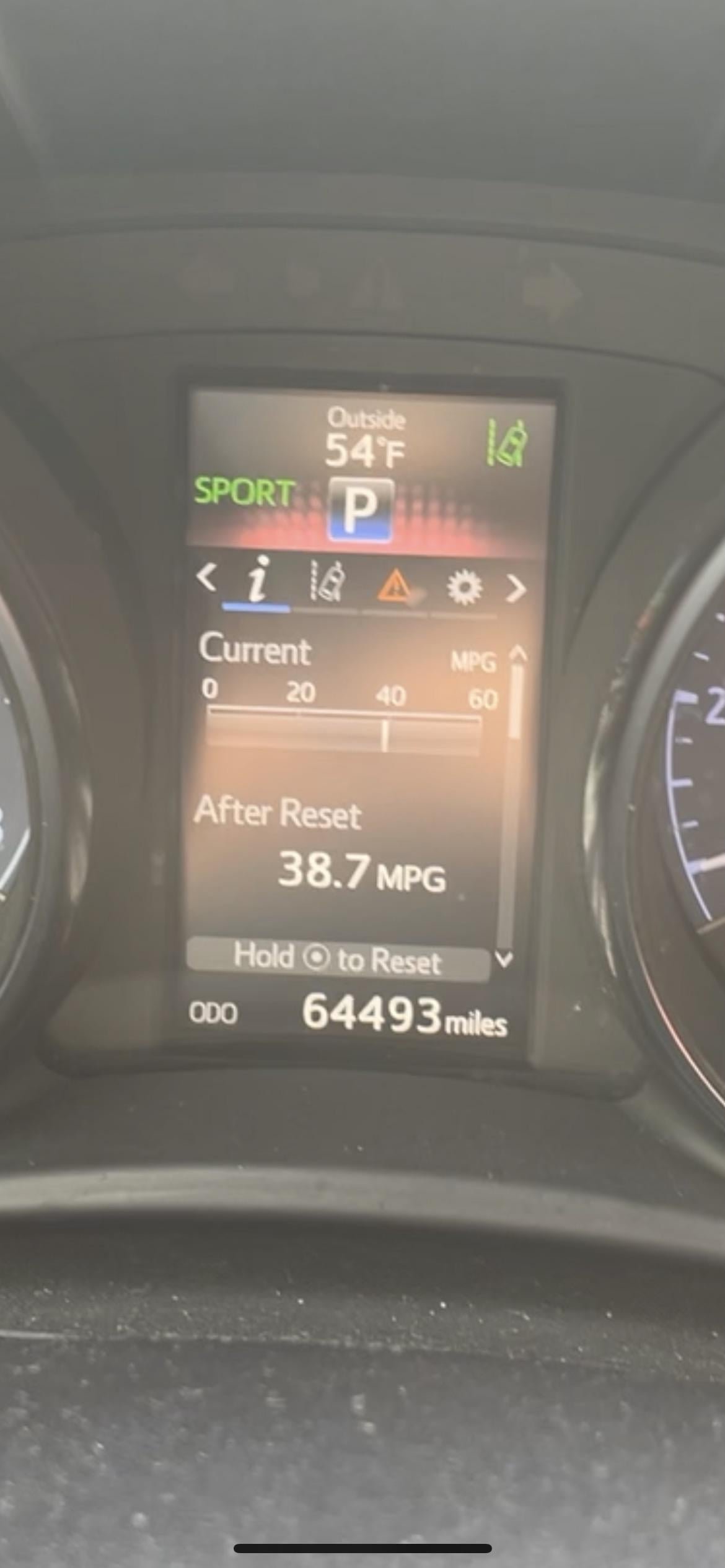Yes, sport mode usually uses more gas. It enhances performance but at a cost.
Sport mode in cars can be exciting. It makes the car feel faster and more responsive. But, how does it affect fuel consumption? Many drivers wonder if this performance boost means more trips to the gas station. Understanding how sport mode impacts fuel use is essential.
You will learn about the mechanics behind sport mode. Discover why it often leads to higher gas consumption. This insight can help you decide when to use this feature. So, let’s dive into the world of sport mode and fuel efficiency.

Credit: www.reddit.com
Introduction To Sport Mode
Many modern cars come with a feature called Sport Mode. This mode promises a more exciting driving experience. But does it use more gas? To answer this, we must first understand what Sport Mode is and how it works.
Purpose Of Sport Mode
The main purpose of Sport Mode is to enhance the driving experience. It makes the car feel more responsive and powerful. This mode is designed for drivers who enjoy a more dynamic ride. Here are some key aspects:
- Improved throttle response
- Tighter steering
- Enhanced transmission performance
How Sport Mode Works
Sport Mode changes several settings in the car. These changes make the car perform better, but they can also lead to higher gas consumption. Below is a table explaining how these changes work:
| Car Component | Effect in Sport Mode |
|---|---|
| Throttle | More sensitive, quicker acceleration |
| Transmission | Holds gears longer, faster shifts |
| Steering | More responsive, tighter feel |
| Suspension | Stiffer, better handling |
These changes make the car more fun to drive. But they can also make the engine work harder, which uses more gas. In summary, while Sport Mode boosts performance, it may also lead to increased fuel consumption.
Fuel Efficiency Basics
Understanding fuel efficiency is crucial for car owners. It helps save money and reduces environmental impact. This section will break down the basics of fuel efficiency and how different factors can affect it.
What Affects Fuel Efficiency
Several factors influence how efficiently your car uses fuel:
- Driving habits: Aggressive driving reduces fuel efficiency.
- Vehicle maintenance: Well-maintained cars run more efficiently.
- Weather conditions: Cold weather lowers fuel efficiency.
- Tire pressure: Properly inflated tires improve fuel economy.
- Weight: Heavier cars consume more fuel.
Paying attention to these factors can help you get better mileage from your car.
Common Myths About Fuel Consumption
There are many myths about fuel consumption:
- Idling saves gas: Idling wastes more fuel than restarting your engine.
- Premium fuel is better: Most cars run fine on regular fuel.
- Manual cars are more efficient: This depends on the model and driving habits.
Knowing the truth about these myths can help you make informed decisions about your car’s fuel consumption.
Impact Of Sport Mode On Fuel Consumption
Sport mode makes your car feel more powerful and responsive. But this power boost can come with a cost. Your car may consume more fuel. Understanding how sport mode affects fuel consumption can help you make informed decisions.
Increased Engine Performance
Sport mode enhances your car’s engine performance. It tweaks the engine’s settings for quicker acceleration. Your car feels faster and more agile. This increased performance means the engine works harder. A harder-working engine uses more fuel.
Higher Rpm And Fuel Use
Sport mode often raises the car’s RPM (revolutions per minute). Higher RPM means the engine spins faster. Faster engine speeds require more fuel. This can lead to higher fuel consumption. Sport mode can make your drives more exciting. But it can also make them less fuel-efficient.

Credit: www.youtube.com
Comparing Sport Mode With Normal Mode
Many modern cars come with a feature known as Sport Mode. This setting adjusts the vehicle’s performance for a more dynamic driving experience. But does Sport Mode use more gas compared to Normal Mode? Let’s dive into the differences between these two modes.
Driving Dynamics
Sport Mode enhances the car’s driving dynamics. It makes the throttle more responsive. The transmission shifts gears faster and holds them longer. This results in quicker acceleration. The steering also becomes tighter, providing better feedback.
Normal Mode, on the other hand, is designed for everyday driving. It prioritizes comfort and fuel efficiency. The throttle response is smoother. The transmission shifts gears at lower RPMs. The steering is lighter, making it easier to handle in city traffic.
Fuel Efficiency Differences
The primary concern for many drivers is fuel efficiency. Sport Mode tends to use more gas. The engine revs higher and stays in lower gears longer. This increases fuel consumption.
In comparison, Normal Mode is more fuel-efficient. The engine operates at lower RPMs. The transmission shifts gears early. This helps in saving gas and reducing emissions.
| Aspect | Sport Mode | Normal Mode |
|---|---|---|
| Throttle Response | More responsive | Smoother |
| Transmission Shifts | Faster and higher RPM | Slower and lower RPM |
| Steering | Tighter | Lighter |
| Fuel Consumption | Higher | Lower |
Real-world Testing Results
Real-world testing results offer valuable insights into the impact of sport mode on fuel consumption. Many drivers wonder if the thrill of increased performance comes with a higher fuel cost. To provide clarity, we delve into practical case studies and real driver experiences.
Case Studies
Several case studies have been conducted to measure fuel usage in sport mode. Researchers tested various car models under different driving conditions. They noted both urban and highway scenarios.
One study found that sport mode increased fuel consumption by about 10%. Another study showed even higher fuel use in city driving. The car’s engine works harder, leading to more fuel burn.
These studies provide a clear picture. Sport mode can indeed use more gas. But the exact amount varies by vehicle and driving conditions.
Driver Experiences
Real drivers also share their fuel usage stories. Many notice a drop in fuel efficiency when using sport mode. One driver mentioned a 15% decrease in mileage on regular commutes. Another observed a higher fuel cost during spirited weekend drives.
Some drivers accept this trade-off for the joy of sport mode. They value the enhanced acceleration and responsive handling. Others switch to sport mode only for special occasions. They prefer to save gas during everyday driving.
These experiences highlight a common theme. Sport mode often leads to higher fuel consumption. Yet, it provides a thrilling driving experience that some find worth the cost.
Factors That Influence Fuel Usage
Sport mode is a popular feature in many modern vehicles. It can enhance the driving experience, but it can also impact fuel consumption. Various factors influence how much gas your car uses when you activate sport mode. Let’s explore some of these factors in detail.
Driving Conditions
Driving conditions play a significant role in fuel usage. In sport mode, a car usually has a more aggressive throttle response. This means the engine works harder, consuming more fuel.
Traffic: Heavy traffic can worsen fuel consumption. Frequent stops and starts require more energy.
Highway Driving: On highways, sport mode can be more efficient. The vehicle maintains a steady speed, which may offset the extra fuel consumption.
Vehicle Type
The type of vehicle also affects fuel usage in sport mode. Different vehicles respond differently to sport mode settings.
Sedans: Smaller cars like sedans may see a moderate increase in fuel consumption. Their engines are generally more fuel-efficient.
SUVs: Larger vehicles like SUVs can use significantly more gas. Their bigger engines require more fuel to deliver the same performance boost.
Hybrids: Hybrid vehicles may offer better fuel economy, even in sport mode. Their electric motors assist the engine, reducing overall fuel usage.
Understanding these factors can help you make better decisions about using sport mode. Whether it’s traffic, highway driving, or the type of vehicle, each element contributes to your car’s fuel consumption.
Tips For Maximizing Fuel Efficiency
Maximizing fuel efficiency is crucial for saving money and reducing environmental impact. While driving in Sport Mode can be thrilling, it often consumes more gas. Here are some practical tips to help you save fuel, even if you enjoy the occasional Sport Mode drive.
Driving Habits
Improving your driving habits can significantly enhance fuel efficiency. Consider these tips:
- Avoid rapid acceleration and hard braking. Smooth driving conserves fuel.
- Use cruise control on highways. It maintains a steady speed, reducing fuel consumption.
- Reduce idling time. Turn off the engine if you stop for more than a minute.
- Plan routes to avoid traffic congestion. Less stopping and starting saves fuel.
Regular Maintenance
Regular vehicle maintenance is essential for optimal performance and fuel efficiency. Follow these guidelines:
- Keep tires properly inflated. Under-inflated tires increase rolling resistance and fuel use.
- Replace air filters regularly. Clean air filters improve engine efficiency.
- Use the recommended motor oil. The right oil reduces engine friction and saves fuel.
- Keep the engine tuned. A well-maintained engine runs more efficiently.
Consider a table to track your vehicle maintenance schedule:
| Maintenance Task | Frequency |
|---|---|
| Check tire pressure | Monthly |
| Replace air filter | Every 12,000 miles |
| Oil change | Every 5,000 miles |
| Engine tune-up | Annually |
Frequently Asked Questions
Does Sport Mode Burn More Fuel?
Yes, sport mode generally burns more fuel. It enhances engine performance, increasing throttle response and acceleration, which uses more gas.
Why Does Sport Mode Use More Gas?
Sport mode uses more gas because it increases engine power. This results in higher fuel consumption due to more aggressive driving dynamics.
Is Sport Mode Bad For Your Car?
Sport mode is not bad for your car if used occasionally. However, constant use can cause more wear and tear on engine components.
Does Sport Mode Increase Speed?
Yes, sport mode increases speed. It enhances throttle response and engine power, allowing for faster acceleration and improved performance.
Conclusion
Sport mode can use more gas due to increased performance demands. It boosts power and responsiveness, leading to higher fuel consumption. Regular driving habits impact fuel efficiency too. Choose sport mode wisely, balancing enjoyment and fuel costs. Experiment to find the best balance for your needs.
Remember, sport mode is fun but might cost more at the pump. Efficient driving can save gas, even in sport mode. Always consider your driving style and needs.



